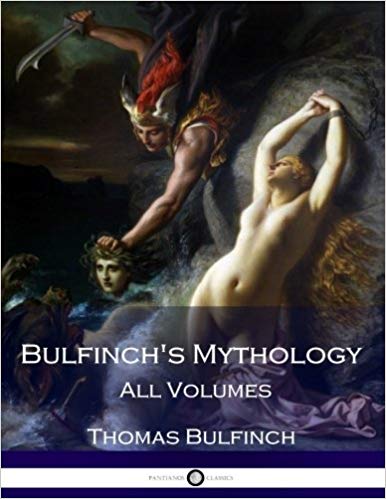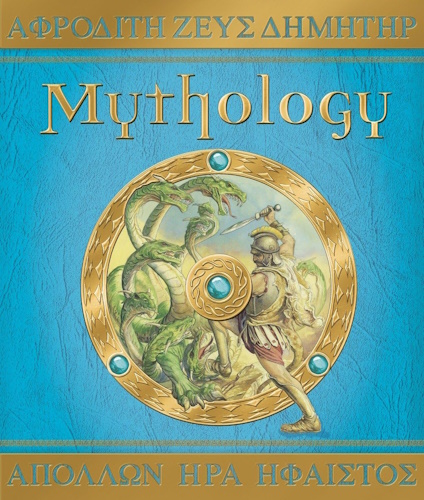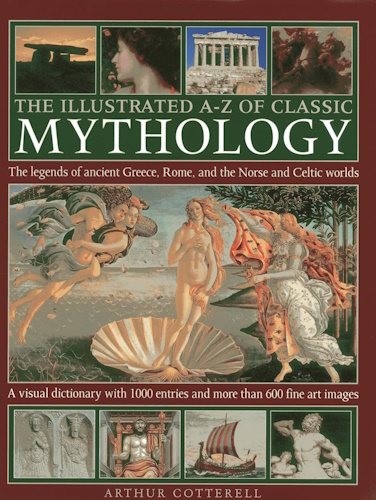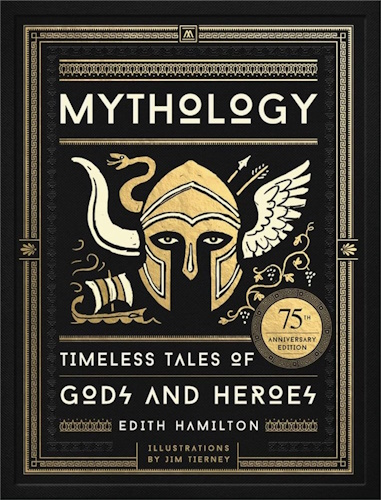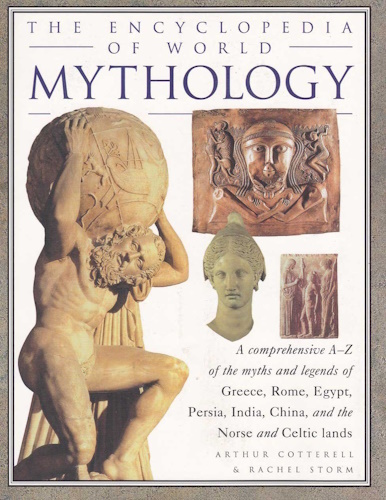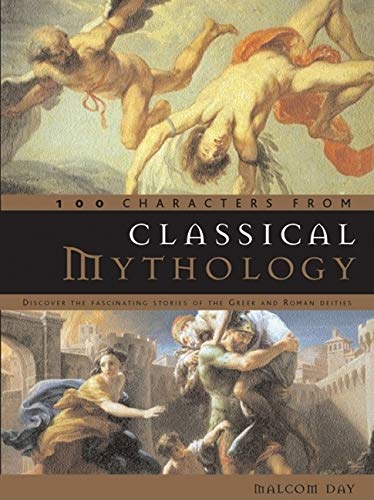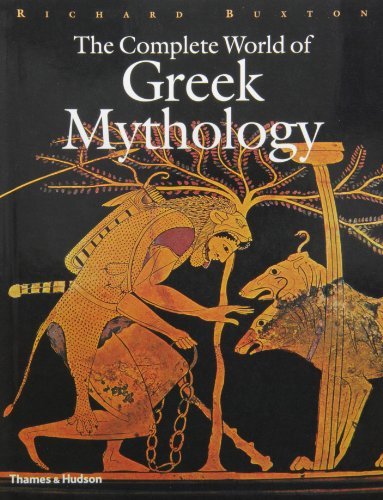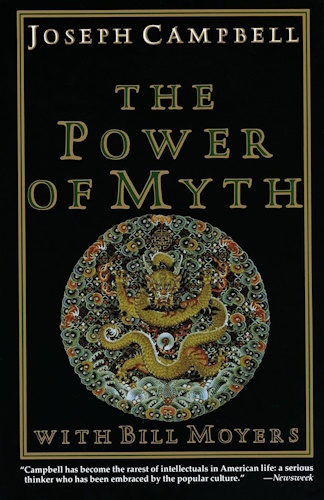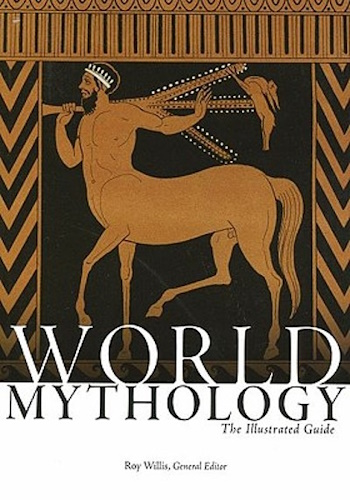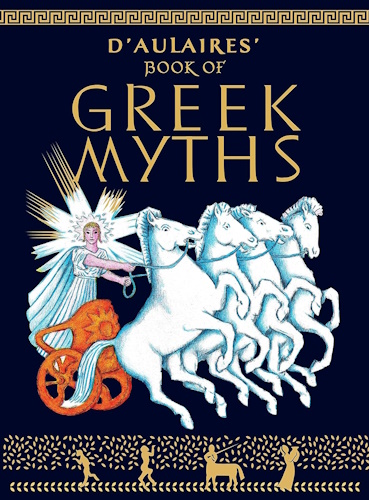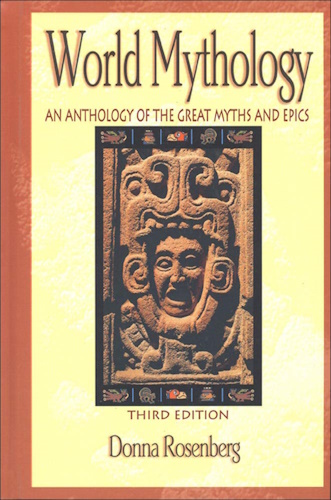
![]()
![]()
CHAPTER XXXVII.
EASTERN MYTHOLOGY- ZOROASTER- HINDU MYTHOLOGY- CASTES-
BUDDHA- GRAND LAMA.
ZOROASTER.
OUR knowledge of the religion of the ancient Persians is principally derived from the Zendavesta, or sacred books of that people. Zoroaster was the founder of their religion, or rather the reformer of the religion which preceded him. The time when he lived is doubtful, but it is certain that his system became the dominant religion of Western Asia from the time of Cyrus (550 B.C.) to the conquest of Persia by Alexander the Great. Under the Macedonian monarchy the doctrines of Zoroaster appear to have been considerably corrupted by the introduction of foreign opinions; but they afterwards recovered their ascendency.
Zoroaster taught the existence of a supreme being, who created two other mighty beings and imparted to them as much of his own nature as seemed good to him. Of these, Ormuzd (called by the Greeks Oromasdes) remained faithful to his creator, and was regarded as the source of all good, while Ahriman (Arimanes) rebelled, and became the author of all evil upon the earth. Ormuzd created man and supplied him with all the materials of happiness; but Ahriman marred this happiness by introducing evil into the world, and creating savage beasts and poisonous reptiles and plants. In consequence of this, evil and good are now mingled together in every part of the world, and the followers of good and evil- the adherents of Ormuzd and Ahriman- carry on incessant war. But this state of things will not last for ever. The time will come when the adherents of Ormuzd shall everywhere be victorious, and Ahriman and his followers be consigned to darkness for ever.
The religious rites of the ancient Persians were exceedingly simple. They used neither temples, altars, nor statues, and performed their sacrifices on the tops of mountains. They adored fire, light, and the sun as emblems of Ormuzd, the source of all light and purity, but did not regard them as independent deities. The religious rites and ceremonies were regulated by the priests, who were called Magi. The learning of the Magi was connected with astrology and enchantment, in which they were so celebrated that their name was applied to all orders of magicians and enchanters.
Wordsworth thus alludes to the worship of the Persians:
"...the Persians,- zealous to rejectAltar and Image, and the inclusive walls
And roofs of temples built by human hands,-
The loftiest heights ascending, from their tops,
With myrtle-wreathed Tiara on his brows,
Presented sacrifice to Moon and Stars,
And to the Winds and mother Elements,
And the whole circle of the Heavens, for him
A sensitive existence and a God."
Excursion, Book IV.
In "Childe Harold" Byron speaks thus of the Persian worship:
"Not vainly did the early Persian makeHis altar the high places and the peak
Of earth-o'er-gazing mountains, and thus take
A fit and unwalled temple, there to seek
The Spirit, in whose honour shrines are weak,
Upreared of human hands. Come and compare
Columns and idol-dwellings, Goth or Greek,
With Nature's realms of worship, earth and air,
Nor fix on fond abodes to circumscribe thy prayer."
III. 91.
The religion of Zoroaster continued to flourish even after the introduction of Christianity, and in the third century was the dominant faith of the East, till the rise of the Mahometan power and the conquest of Persia by the Arabs in the seventh century, who compelled the greater number of the Persians to renounce their ancient faith. Those who refused to abandon the religion of their ancestors fled to the deserts of Kerman and to Hindustan, where they still exist under the name of Parsees, a name derived from Paris, the ancient name of Persia. The Arabs call them Guebers, from an Arabic word signifying unbelievers. At Bombay the Parsees are at this day a very active, intelligent, and wealthy class. For purity of life, honesty, and conciliatory manners, they are favourably distinguished. They have numerous temples to Fire, which they adore as the symbol of the divinity.
The Persian religion makes the subject of the finest tale in Moore's "Lalla Rookh," the "Fire Worshippers." The Gueber chief says:
"Yes! I am of that impious race,Those slaves of Fire, that morn and even
Hail their creator's dwelling-place
Among the living lights of heaven;
Yes I am of that outcast crew
To Iran and to vengeance true,
Who curse the hour your Arabs came
To desecrate our shrines of flame,
And swear before God's burning eye
To break our country's chains or die."
HINDU MYTHOLOGY.
The religion of the Hindus is professedly founded on the Vedas. To these books of their scripture they attach the greatest sanctity, and state that Brahma himself composed them at the creation. But the present arrangement of the Vedas is attributed to the sage Vyasa, about five thousand years ago.
The Vedas undoubtedly teach the belief of one supreme God. The name of this deity is Brahma. His attributes are represented by the three personified powers of creation, preservation, and destruction, which under the respective names of Brahma, Vishnu, and Siva form the Trimurti or triad of principal Hindu gods. Of the inferior gods the most important are: 1. Indra, the god of heaven, of thunder, lightning, storm, and rain; 2. Agni, the god of fire; 3. Yama, the god of the infernal regions; 4. Surya, the god of the sun.
Brahma is the creator of the universe, and the source from which all the individual deities have sprung, and into which all will ultimately be absorbed. "As milk changes to curd, and water to ice, so is Brahma variously transformed and diversified, without aid of exterior means of any sort." The human soul, according to the Vedas, is a portion of the supreme ruler, as a spark is of the fire.
VISHNU.
Vishnu occupies the second place in the triad of the Hindus, and is the personification of the preserving principle. To protect the world in various epochs of danger, Vishnu descended to the earth in different incarnations, or bodily forms, which descents are called Avatars. They are very numerous, but ten are more particularly specified. The first Avatar was as Matsya, the Fish, under which form Vishnu preserved Manu, the ancestor of the human race, during a universal deluge. The second Avatar was in the form of a Tortoise, which form he assumed to support the earth when the gods were churning the sea for the beverage of immortality, Amrita.
We may omit the other Avatars, which were of the same general character, that is, interpositions to protect the right or to punish wrong-doers, and come to the ninth, which is the most celebrated of the Avatars of Vishnu, in which he appeared in the human form of Krishna, an invincible warrior, who by his exploits relieved the earth from the tyrants who oppressed it.
Buddha is by the followers of the Brahminical religion regarded as a delusive incarnation of Vishnu, assumed by him in order to induce the Asuras, opponents of the gods, to abandon the sacred ordinances of the Vedas, by which means they lost their strength and supremacy.
Kalki is the name of the tenth Avatar, in which Vishnu will appear at the end of the present age of the world to destroy all vice and wickedness, and to restore mankind to virtue and purity.
SIVA.
Siva is the third person of the Hindu triad. He is the personification of the destroying principle. Though the third name, he is, in respect to the number of his worshippers and the extension of his worship, before either of the others. In the Puranas (the scriptures of the modern Hindu religion) no allusion is made to the original power of this god as a destroyer; that power not being to be called into exercise till after the expiration of twelve millions of years, or when the universe will come to an end; and Mahadeva (another name for Siva) is rather the representative of regeneration than of destruction.
The worshippers of Vishnu and Siva form two sects, each of which proclaims the superiority of its favourite deity, denying the claims of the other, and Brahma, the creator, having finished his work, seems to be regarded as no longer active, and has now only one temple in India, while Mahadeva and Vishnu have many. The worshippers of Vishnu are generally distinguished by a greater tenderness for life, and consequent abstinence from animal food, and a worship less cruel than that of the followers of Siva.
JUGGERNAUT.
Whether the worshippers of juggernaut are to be reckoned among the followers of Vishnu or Siva, our authorities differ. The temple stands near the shore, about three hundred miles southwest of Calcutta. The idol is a carved block of wood, with a hideous face, painted black, and a distended blood-red mouth. On festival days the throne of the image is placed on a tower sixty feet high, moving on wheels. Six long ropes are attached to the tower, by which the people draw it along. The priests and their attendants stand round the throne on the tower, and occasionally turn to the worshippers with songs and gestures. While the tower moves along numbers of the devout worshippers throw themselves on the ground, in order to be crushed by the wheels, and the multitude shout in approbation of the act, as a pleasing sacrifice to the idol. Every year, particularly at two great festivals in March and July, pilgrims flock in crowds to the temple. Not less than seventy or eighty thousand people are said to visit the place on these occasions, when all castes eat together.
CASTES.
The division of the Hindus into classes or castes, with fixed occupations, existed from the earliest times. It is supposed by some to have been founded upon conquest, the first three castes being composed of a foreign race, who subdued the natives of the country and reduced them to an inferior caste. Others trace it to the fondness of perpetuating, by descent from father to son, certain offices or occupations.
The Hindu tradition gives the following account of the origin of the various castes: At the creation Brahma resolved to give the earth inhabitants who should be direct emanations from his own body. Accordingly from his mouth came forth the eldest born, Brahma (the priest), to whom he confided the four Vedas; from his right arm issued Shatriya (the warrior), and from his left, the warrior's wife. His thighs produced Vaissyas, male and female (agriculturists and traders), and lastly from his feet sprang Sudras (mechanics and labourers).
The four sons of Brahma, so significantly brought into the world, became the fathers of the human race, and heads of their respective castes. They were commanded to regard the four Vedas as containing all the rules of their faith, and all that was necessary to guide them in their religious ceremonies. They were also commanded to take rank in the order of their birth, the Brahmans uppermost, as having sprung from the head of Brahma.
A strong line of demarcation is drawn between the first three castes and the Sudras. The former are allowed to receive instruction from the Vedas, which is not permitted to the Sudras. The Brahmans possess the privilege of teaching the Vedas, and were in former times in exclusive possession of all knowledge. Though the sovereign of the country was chosen from the Shatriya class, also called Rajputs, the Brahmans possessed the real power, and were the royal counsellors, the judges and magistrates of the country; their persons and property were inviolable; and though they committed the greatest crimes, they could only be banished from the kingdom. They were to be treated by sovereigns with the greatest respect, for "a Brahman, whether learned or ignorant, is a powerful divinity."
When the Brahman arrives at years of maturity it becomes his duty to marry. He ought to be supported by the contributions of the rich, and not to be obliged to gain his subsistence by any laborious or productive occupation. But as all the Brahmans could not be maintained by the working classes of the community, it was found necessary to allow them to engage in productive employments.
We need say little of the two intermediate classes, whose rank and privileges may be readily inferred from their occupations. The Sudras or fourth class are bound to servile attendance on the higher classes, especially the Brahmans, but they may follow mechanical occupations and practical arts, as painting and writing, or become traders or husbandmen. Consequently they sometimes grow rich, and it will also sometimes happen that Brahmans become poor. That fact works its usual consequence, and rich Sudras sometimes employ poor Brahmans in menial occupations.
There is another class lower even than the Sudras, for it is not one of the original pure classes, but springs from an unauthorized union of individuals of different castes. These are the Pariahs, who are employed in the lowest services and treated with the utmost severity. They are compelled to do what no one else can do without pollution. They are not only considered unclean themselves, but they render unclean everything they touch. They are deprived of all civil rights, and stigmatized by particular laws regulating their mode of life, their houses, and their furniture. They are not allowed to visit the pagodas or temples of the other castes, but have their own pagodas and religious exercises. They are not suffered to enter the houses of the other castes; if it is done incautiously or from necessity, the place must be purified by religious ceremonies. They must not appear at public markets, and are confined to the use of particular wells, which they are obliged to surround with bones of animals, to warn others against using them. They dwell in miserable hovels, distant from cities and villages, and are under no restrictions in regard to food, which last is not a privilege, but a mark of ignominy, as if they were so degraded that nothing could pollute them. The three higher castes are prohibited entirely the use of flesh. The fourth is allowed to use all kinds except beef, but only the lowest caste is allowed every kind of food without restriction.
BUDDHA.
Buddha, whom the Vedas represent as a delusive incarnation of Vishnu, is said by his followers to have been a mortal sage, whose name was Gautama, called also by the complimentary epithets of Sakyasinha, the Lion, and Buddha, the Sage.
By a comparison of the various epochs assigned to his birth, it is inferred that he lived about one thousand years before Christ.
He was the son of a king; and when in conformity to the usage of the country he was, a few days after his birth, presented before the altar of a deity, the image is said to have inclined its head as a presage of the future greatness of the new-born prophet. The child soon developed faculties of the first order, and became equally distinguished by the uncommon beauty of his person. No sooner had he grown to years of maturity than he began to reflect deeply on the depravity and misery of mankind, and he conceived the idea of retiring from society and devoting himself to meditation. His father in vain opposed this design. Buddha escaped the vigilance of his guards, and having found a secure retreat, lived for six years undisturbed in his devout contemplations. At the expiration of that period he came forward at Benares as a religious teacher. At first some who heard him doubted of the soundness of his mind; but his doctrines soon gained credit, and were propagated so rapidly that Buddha himself lived to see them spread all over India. He died at the age of eighty years.
The Buddhists reject entirely the authority of the Vedas, and the religious observances prescribed in them and kept by the Hindus. They also reject the distinction of castes, and prohibit all bloody sacrifices, and allow animal food. Their priests are chosen from all classes; they are expected to procure their maintenance by perambulation and begging, and among other things it is their duty to endeavour to turn to some use things thrown aside as useless by others, and to discover the medicinal power of plants. But in Ceylon three orders of priests are recognized; those of the highest order are usually men of high birth and learning, and are supported at the principal temples, most of which have been richly endowed by the former monarchs of the country.
For several centuries after the appearance of buddha, his sect seems to have been tolerated by the Brahmans, and Buddhism appears to have penetrated the peninsula of Hindustan in every direction, and to have been carried to Ceylon, and to the eastern peninsula. But afterwards it had to endure in India a long-continued persecution, which ultimately had the effect of entirely abolishing it in the country where it had originated, but to scatter it widely over adjacent countries. Buddhism appears to have been introduced into China about the year 65 of our era. From China it was subsequently extended to Corea, Japan, and Java.
THE GRAND LAMA.
It is a doctrine alike of the Brahminical Hindus and of the Buddhist sect that the confinement of the human soul, an emanation of the divine spirit, in a human body, is a state of misery, and the consequence of frailties and sins committed during former existences. But they hold that some few individuals have appeared on this earth from time to time, not under the necessity of terrestrial existence, but who voluntarily descended to the earth to promote the welfare of mankind. These individuals have gradually assumed the character of reappearances of Buddha himself, in which capacity the line is continued till the present day, in the several Lamas of Thibet, China, and other countries where Buddhism prevails. In consequence of the victories of Gengis Khan and his successors, the Lama residing in Thibet was raised to the dignity of chief pontiff of the sect. A separate province was assigned to him as his own territory, and besides his spiritual dignity he became to a limited extent a temporal monarch. He is styled the Dalai Lama.
The first Christian missionaries who proceeded to Thibet were surprised to find there in the heart of Asia a pontifical court and several other ecclesiastical institutions resembling those of the Roman Catholic church. They found convents for priests and nuns, also processions and forms of religious worship, attended with much pomp and splendour; and many were induced by these similarities to consider Lamaism as a sort of degenerated Christianity. It is not improbable that the Lamas derived some of these practices from the Nestorian Christians, who were settled in Tartary when Buddhism was introduced into Thibet.
PRESTER JOHN.
An early account, communicated probably by travelling merchants, of a Lama or spiritual chief among the Tartars, seems to have occasioned in Europe the report of a Presbyter or Prester John, a Christian pontiff resident in Upper Asia. The Pope sent a mission in search of him, as did also Louis IX of France, some years later, but both missions were unsuccessful, though the small communities of Nestorian Christians, which they did find, served to keep up the belief in Europe that such a personage did exist somewhere in the East. At last in the fifteenth century, a Portuguese traveller, Pedro Covilham, happening to hear that there was a Christian prince in the country of the Abessines (Abyssinia), not far from the Red Sea, concluded that this must be the true Prester John. He accordingly went thither, and penetrated to the court of the king, whom he calls Negus. Milton alludes to him in "Paradise Lost," Book XI., where, describing Adam's vision of his descendants in their various nations and cities, scattered over the face of the earth, he says,-
"...Nor did his eyes not kenTh' empire of Negus, to his utmost port,
Ercoco, and the less maritime kings,
Mombaza and Quiloa and Melind."
-
Urantia Book, 44:0.11 - The Celestial Artisans
Never in your long ascendancy will you lose the power to recognize your associates of former existences. Always, as you ascend inward in the scale of life, will you retain the ability to recognize and fraternize with the fellow beings of your previous and lower levels of experience. Each new translation or resurrection will add one more group of spirit beings to your vision range without in the least depriving you of the ability to recognize your friends and fellows of former estates.
-
Princess Bride 1987 Wallace Shawn (Vizzini) and Mandy Patinkin (Inigo Montoya)
Vizzini: HE DIDN'T FALL? INCONCEIVABLE.
Inigo Montoya: You keep using that word. I do not think it means what you think it means. -
Urantia Book, 117:4.14 - The Finite God
And here is mystery: The more closely man approaches God through love, the greater the reality -- actuality -- of that man. The more man withdraws from God, the more nearly he approaches nonreality -- cessation of existence. When man consecrates his will to the doing of the Father's will, when man gives God all that he has, then does God make that man more than he is.
-
Urantia Book, 167:7.4 - The Talk About Angels
"And do you not remember that I said to you once before that, if you had your spiritual eyes anointed, you would then see the heavens opened and behold the angels of God ascending and descending? It is by the ministry of the angels that one world may be kept in touch with other worlds, for have I not repeatedly told you that I have other sheep not of this fold?"
-
Urantia Book, Foreword - 0:12.12 - The Trinities
But we know that there dwells within the human mind a fragment of God, and that there sojourns with the human soul the Spirit of Truth; and we further know that these spirit forces conspire to enable material man to grasp the reality of spiritual values and to comprehend the philosophy of universe meanings. But even more certainly we know that these spirits of the Divine Presence are able to assist man in the spiritual appropriation of all truth contributory to the enhancement of the ever-progressing reality of personal religious experience—God-consciousness.
-
Urantia Book, 1:4.3 - The Mystery Of God
When you are through down here, when your course has been run in temporary form on earth, when your trial trip in the flesh is finished, when the dust that composes the mortal tabernacle "returns to the earth whence it came"; then, it is revealed, the indwelling "Spirit shall return to God who gave it." There sojourns within each moral being of this planet a fragment of God, a part and parcel of divinity. It is not yet yours by right of possession, but it is designedly intended to be one with you if you survive the mortal existence.
-
Urantia Book, 1:4.1 - The Mystery Of God
And the greatest of all the unfathomable mysteries of God is the phenomenon of the divine indwelling of mortal minds. The manner in which the Universal Father sojourns with the creatures of time is the most profound of all universe mysteries; the divine presence in the mind of man is the mystery of mysteries.
-
Urantia Book, 1:4.6 - The Mystery Of God
To every spirit being and to every mortal creature in every sphere and on every world of the universe of universes, the Universal Father reveals all of his gracious and divine self that can be discerned or comprehended by such spirit beings and by such mortal creatures. God is no respecter of persons, either spiritual or material. The divine presence which any child of the universe enjoys at any given moment is limited only by the capacity of such a creature to receive and to discern the spirit actualities of the supermaterial world.
-
Urantia Book, 11:0.1 - The Eternal Isle Of Paradise
Paradise is the eternal center of the universe of universes and the abiding place of the Universal Father, the Eternal Son, the Infinite Spirit, and their divine co-ordinates and associates. This central Isle is the most gigantic organized body of cosmic reality in all the master universe. Paradise is a material sphere as well as a spiritual abode. All of the intelligent creation of the Universal Father is domiciled on material abodes; hence must the absolute controlling center also be material, literal. And again it should be reiterated that spirit things and spiritual beings are real.
-
Urantia Book, 50:6.4 - Planetary Culture
Culture presupposes quality of mind; culture cannot be enhanced unless mind is elevated. Superior intellect will seek a noble culture and find some way to attain such a goal. Inferior minds will spurn the highest culture even when presented to them ready-made.
-
Urantia Book, 54:1.6 - True And False Liberty
True liberty is the associate of genuine self-respect; false liberty is the consort of self-admiration. True liberty is the fruit of self-control; false liberty, the assumption of self-assertion. Self-control leads to altruistic service; self-admiration tends towards the exploitation of others for the selfish aggrandizement of such a mistaken individual as is willing to sacrifice righteous attainment for the sake of possessing unjust power over his fellow beings.
-
Urantia Book, 54:1.9 - True And False Liberty
How dare the self-willed creature encroach upon the rights of his fellows in the name of personal liberty when the Supreme Rulers of the universe stand back in merciful respect for these prerogatives of will and potentials of personality! No being, in the exercise of his supposed personal liberty, has a right to deprive any other being of those privileges of existence conferred by the Creators and duly respected by all their loyal associates, subordinates, and subjects.
-
Urantia Book, 54:1.8 - True And False Liberty
There is no error greater than that species of self-deception which leads intelligent beings to crave the exercise of power over other beings for the purpose of depriving these persons of their natural liberties. The golden rule of human fairness cries out against all such fraud, unfairness, selfishness, and unrighteousness.
